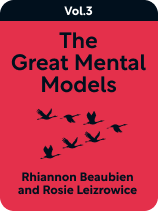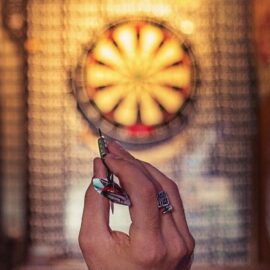

This article is an excerpt from the Shortform book guide to "The Great Mental Models Volume 3" by Rhiannon Beaubien and Rosie Leizrowice. Shortform has the world's best summaries and analyses of books you should be reading.
Like this article? Sign up for a free trial here .
Do you tend to live in the moment only to neglect the future? How might you make better choices today that will pay off in the future?
The book The Great Mental Models Volume 3 by Rhiannon Beaubien and Rosie Leizrowice provides some fresh approaches to long-term thinking. They draw from models in economics and science to show us how we can make life investments today that will bring us rewards in the future.
Continue reading for some unconventional advice on how to think long-term.
Long-Term Thinking
If you’re looking to maintain or grow a system, it pays to plan ahead. We’ll look at two models that encourage effective long-term thinking. The central theme is that being open-minded and broadening your knowledge can lead to big gains down the road. These gains might be material or they might come in the form of enhanced creativity or greater preparedness for the unknown. To learn how to think long-term, consider the models of compounding and surface area.
#1: Compounding
One major reason to think long-term is that doing so lets you capitalize on the effects of compounding. The authors explain that investments of money, knowledge, and effort compound over time, leading to exponential (rather than linear) gains.
The model of compounding comes from finance and economics, where it refers to compound interest—the process of adding interest earnings back to an initial investment in order to earn more interest next time. If you put $100 in an account with a 10% daily interest rate, the next day your account will have $110—you earned $10 in interest. If you leave that money alone, then on the third day you’ll have $121—this time, you earned $11 in interest.
Beaubien and Leizrowice argue that a similar form of compounding happens as you build knowledge and skills over time. For example, if you’re just learning to cook, making dinner takes a long time—your knife work is slow, you measure everything carefully, and you keep checking the recipe to see what to do next. But eventually, the physical skills become second nature and you begin to internalize the basic principles and techniques that dishes are based on. Your cooking becomes a lot faster because new recipes aren’t really new—they’re variations on things you already know how to make. Moreover, you can take on more complicated dishes than you could at first because you’ve built an ever-increasing base of knowledge and skill.
(Shortform note: In Atomic Habits, James Clear takes the idea of compounding even further by arguing that your identity is the product of your actions—in other words, that your behaviors compound over time to produce who you are as a person. The good news, from this point of view, is that you can capitalize on this compounding by using small changes to create major transformations in your life.)
#2: Surface Area
Even when it’s happening, sometimes compounding isn’t obvious because there’s no way to know what gains await you down the line. For this reason, the authors recommend that you increase your surface area by exposing yourself to as many new ideas and experiences as possible. They point out that, in geometry and physics, the more surface area an object has, the more (literal) connections it has to the world around it—and the more connections, the more opportunities to exchange molecules, energy, and so on.
By way of analogy, the greater your surface area, the more connections you make and the greater your chances to find unexpected opportunities and new applications for things you’ve learned before. Building on the last example, when you learn to cook, you learn more than just how to prepare food. You learn how to organize, prioritize, problem solve, and manage your time. These skills will come in handy for years to come in your job, hobbies, and daily life.
(Shortform note: In other words, increasing your surface area builds your collection of what educators and career experts call transferable skills—abilities and knowledge that you learn in one context but can apply in many other contexts as well. The more transferable skills you have, the more challenges you’ll be able to face. And the more aware you are of your transferable skills, the more competitive you’ll be when looking for jobs or other opportunities.)
So how do you increase your surface area? The authors recommend being curious and open to new things. They also recommend cultivating your relationships, pointing out that networking is another form of compounding because each person you know exponentially increases your chances of meeting another new person or finding a new opportunity.
(Shortform note: Growing your skills and knowledge can help you grow your relationships, and vice versa: If you’re at a party, your cooking experience might help you strike up a conversation about the food with another guest. And as with skills and knowledge, you never know where your personal connections will lead you or when. Maybe your fellow partygoer—who happens to be a professional chef—is impressed with your insight into the food and invites you to interview for a job at her restaurant.)

———End of Preview———
Like what you just read? Read the rest of the world's best book summary and analysis of Rhiannon Beaubien and Rosie Leizrowice's "The Great Mental Models Volume 3" at Shortform .
Here's what you'll find in our full The Great Mental Models Volume 3 summary :
- How to understand anything in the world by learning a finite set of rules and patterns
- A look at how humans are driven by algorithms
- Why you shouldn't be fooled by randomness






